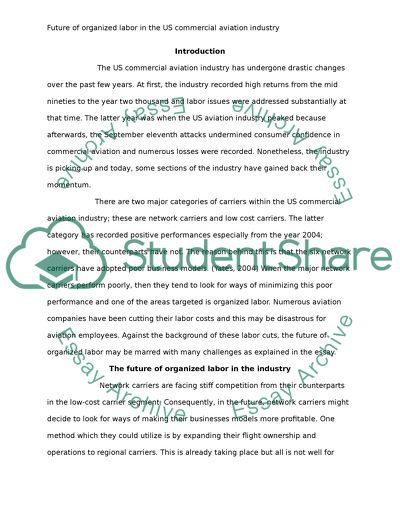Cite this document
(“Future of organized labor in the US commercial aviation industry Essay”, n.d.)
Future of organized labor in the US commercial aviation industry Essay. Retrieved from https://studentshare.org/technology/1510689-future-of-organized-labor-in-the-us-commercial-aviation-industry
Future of organized labor in the US commercial aviation industry Essay. Retrieved from https://studentshare.org/technology/1510689-future-of-organized-labor-in-the-us-commercial-aviation-industry
(Future of Organized Labor in the US Commercial Aviation Industry Essay)
Future of Organized Labor in the US Commercial Aviation Industry Essay. https://studentshare.org/technology/1510689-future-of-organized-labor-in-the-us-commercial-aviation-industry.
Future of Organized Labor in the US Commercial Aviation Industry Essay. https://studentshare.org/technology/1510689-future-of-organized-labor-in-the-us-commercial-aviation-industry.
“Future of Organized Labor in the US Commercial Aviation Industry Essay”, n.d. https://studentshare.org/technology/1510689-future-of-organized-labor-in-the-us-commercial-aviation-industry.


